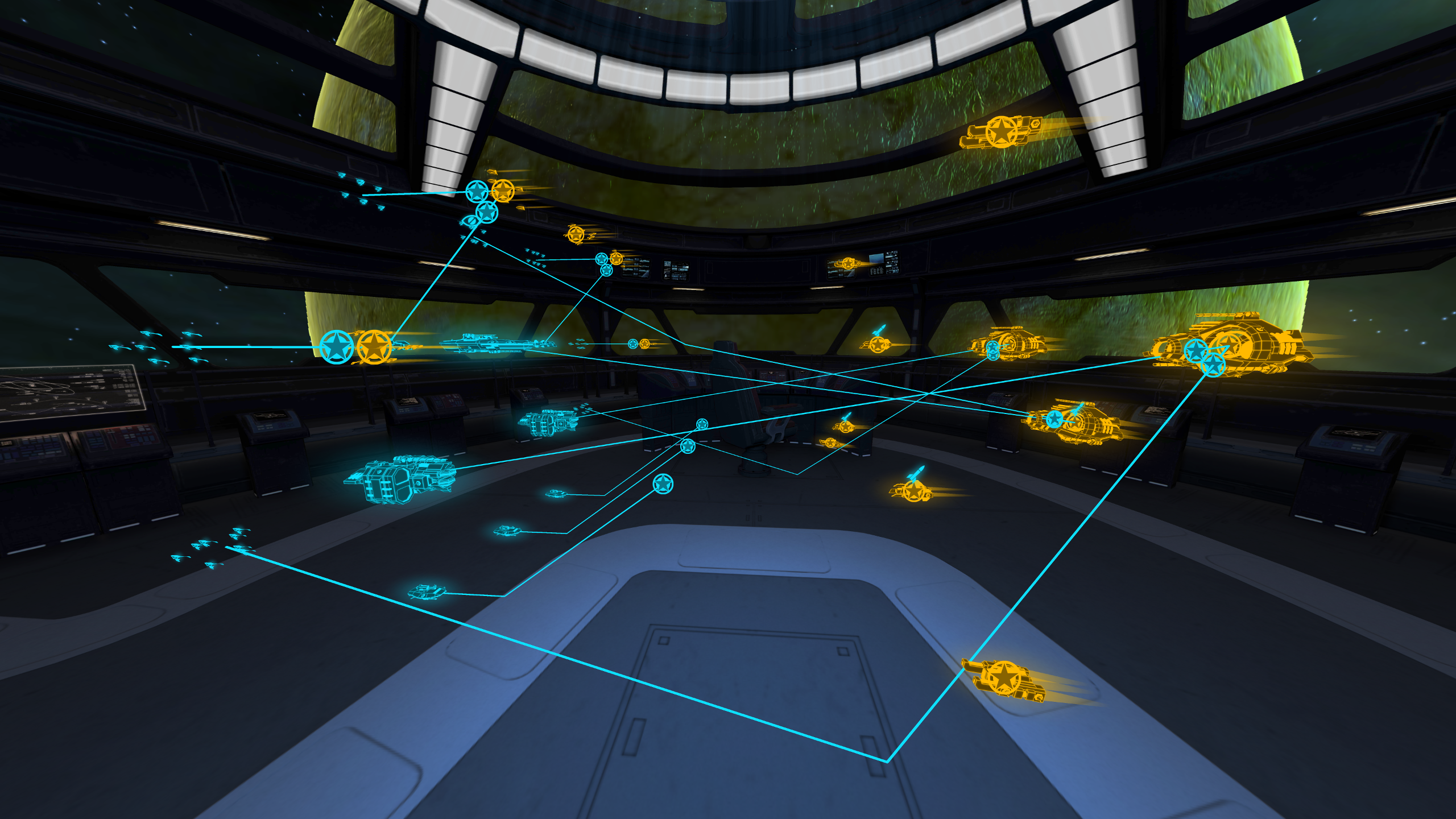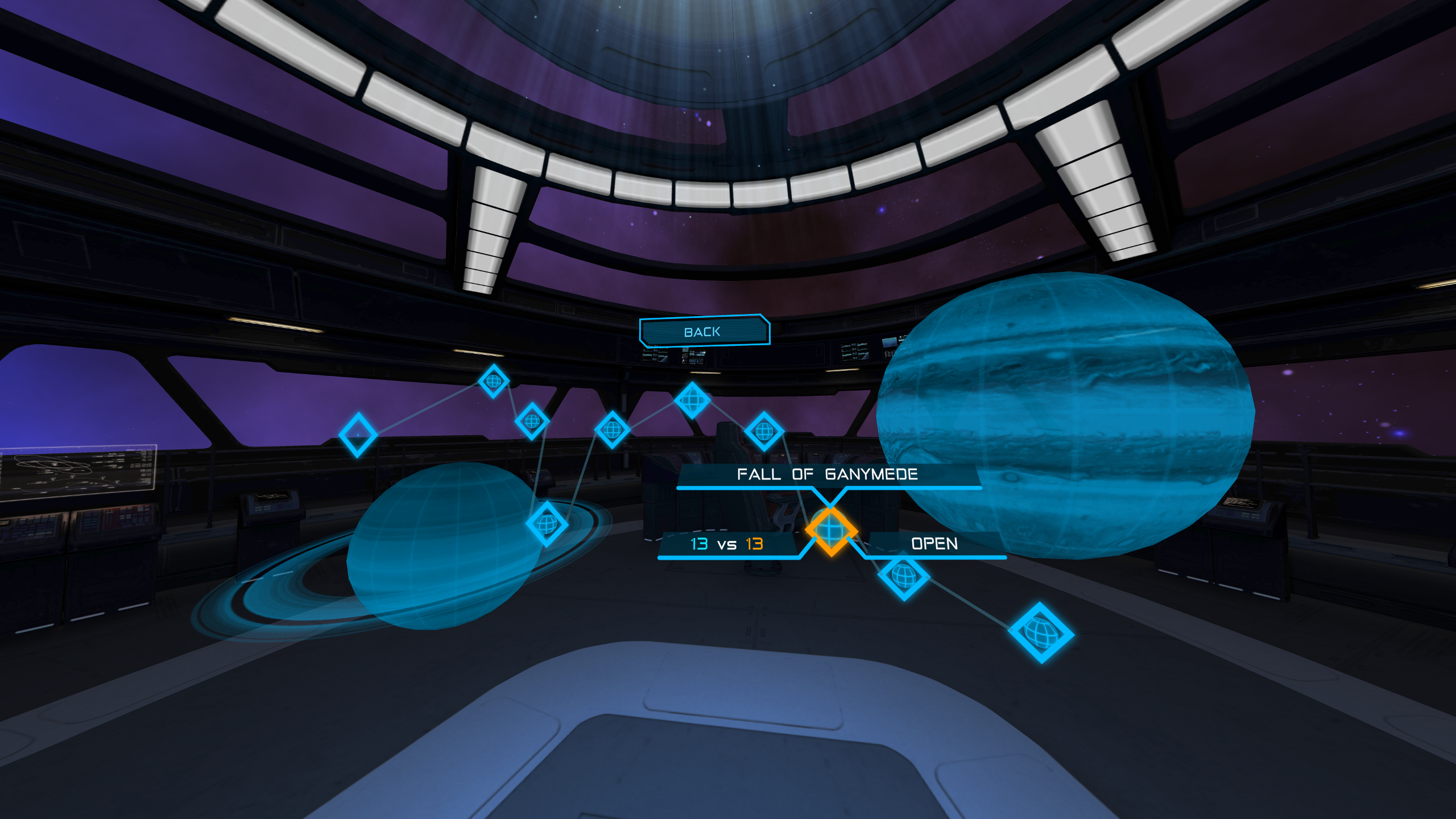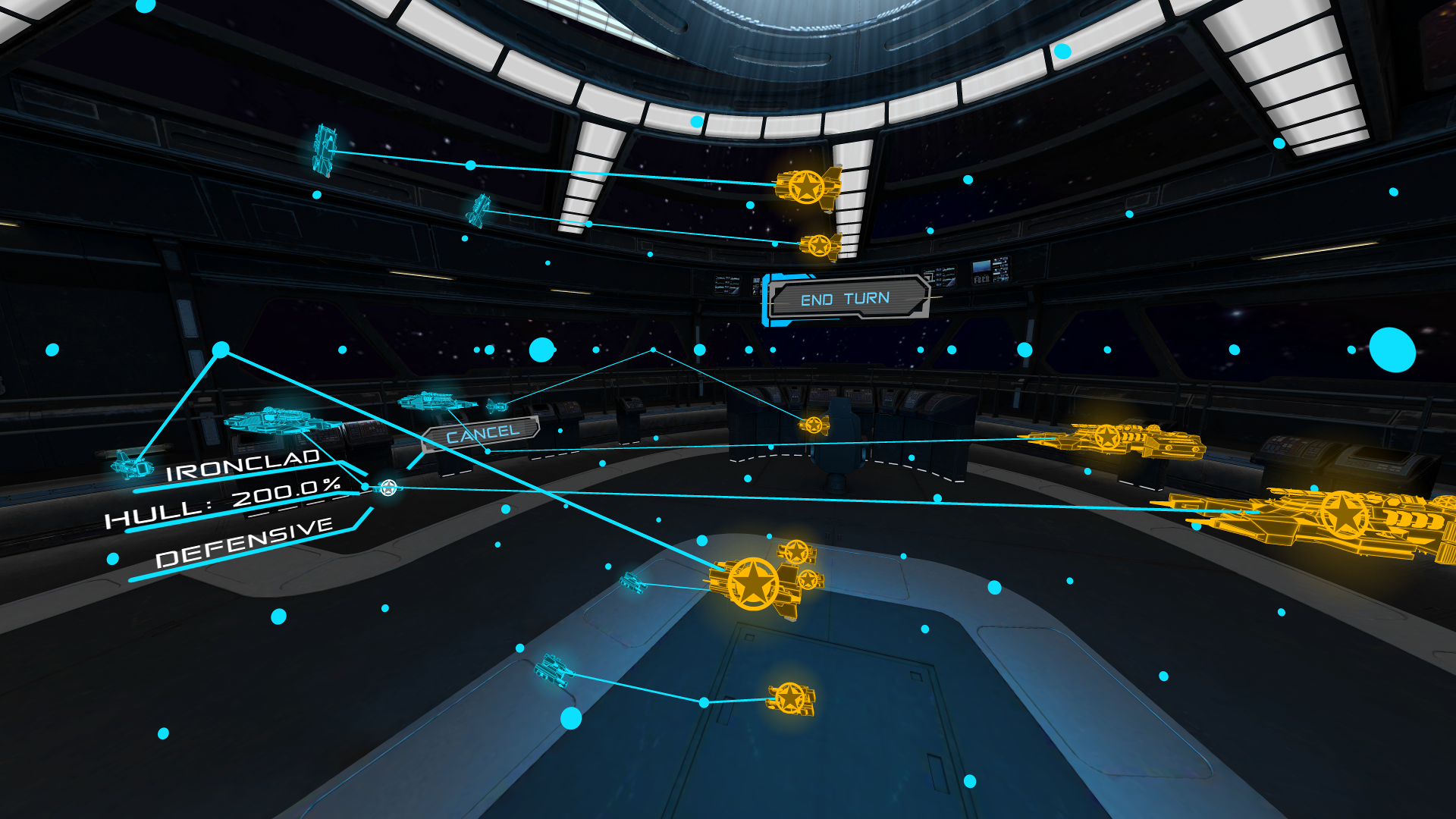When presented with the potential of VR as a new medium for video games, first-person shooters may immediately come to mind. But the prospect of being able to stand atop a battlefield, looking down at units, and commanding forces as an all-seeing god-like being is just as exciting. We’ve seen a few interpretations of the idea, such as AirMech Command, which mostly stay true to the genre’s roots, few games have stepped outside the genre boundaries.
Which brings us to Skylight. This latest release checks many of the boxes we’ve come to expect from strategy games over the years, but it’s ultimately a difficult game to describe mechanically as it melds elements from real-time strategy and turn-based tactics experiences together into something fresh and unique.
At first glance, Skylight looks just about like anything else E McNeill has done in his stint with independent VR game development. The neon-infused lines and colors are reminiscent of both of his past works (Darknet and Tactera), lending an identifiable style that feels both familiar and fresh at the same time. While Darknet was very clearly a unique VR-powered puzzle game and Tactera was an inventive adaptation of real-time strategy mechanics played on a virtual tabletop, Skylight is something a bit different altogether.
From the start of the game, the cohesive thematic sense of immersion is extremely well-done. Your character is standing aboard a starship in outer space as the soft, kind voice of a female A.I. speaks to you, addressing you as the commander. The premise is that you’re presented with a large 3D visualization of a battlefield as it’s happening millions of miles away in another region of space.
During missions your fleet, the blue ships, begin on the left side, while your enemy’s fleet, the yellow ships, begin on the right side. You look at each of your ships, tap the touchpad, then pick a node on the battlefield for them to approach or an enemy to attack. After you’ve issued all of the commands to your fleet, you confirm, and then everything starts to move at once. Your ships, your enemy’s ships — the action takes place simultaneously in real-time for both sides. It’s like a neon-space opera ripped out of Ender’s Game.
As the ships move around the environment, a timer is ticking down. Once it’s done the action pauses again for each side to issue new orders and the cycle repeats itself until one side loses all of their large capital ships. Things start out easy in the campaign with you outnumbering your enemy but quickly get more difficult as the missions carry on. There are three core campaigns split between Easy, Normal, and Hard difficulty levels. In my experience, the Hard campaign is in fact extremely difficult.
In addition to capital ships there are defensive ships and attack-type ships as well. Even though the combat system sounds relatively simplistic, the visual detail and animations put it over the top in terms of quality. Small fighter ships zip around larger ships during combat and the sound of rail guns firing really sells your eardrums on the power. Before long, you’ll really start to feel like the commander of a futuristic star fleet.
Skylight is launching with a free-to-play demo version and the option to unlock the full game for $4.99. In the free version, you get access to 8 of the 12 total ships and 10 of the 30 campaign missions, along with some multiplayer matchmaking limitations. If you enjoy the first few missions you play in the Easy campaign, I’d highly recommend purchasing the full game early instead of waiting because the extra ships really open up a lot of new strategic opportunities. Triple the number of missions and more multiplayer don’t hurt either.
Even though there is a good amount of content, I came away wishing for some type of structured campaign mode with a more refined story. The lore of the different planets and factions is there in descriptive text, but it’s not enticing enough to keep reading. More varied objectives, maps, and even just extra environments could have helped extend Skylight’s appeal. There is a Skirmish mode for quick battles you set up on your own, as well as Multiplayer matchmaking, which does add up to a relatively robust package.
Skylight may very well be E McNeill’s best game to-date. The stylistic neon visuals shine through with more detail than ever before and the intricate mixture of turn-based tactics and real-time strategy add up to an engaging and unique experience for Gear VR. A more robust campaign mode and a bit more gameplay variety could have turned Skylight into an even better tactical affair, but as it stands, it’s one of the best VR games for strategy fans so far.
Skylight will be available as a free demo version on Gear VR starting today (1/12/17), with an upgrade to the full game costing $4.99. Read our Game Review Guidelines for more information on how we arrived at this score.




























